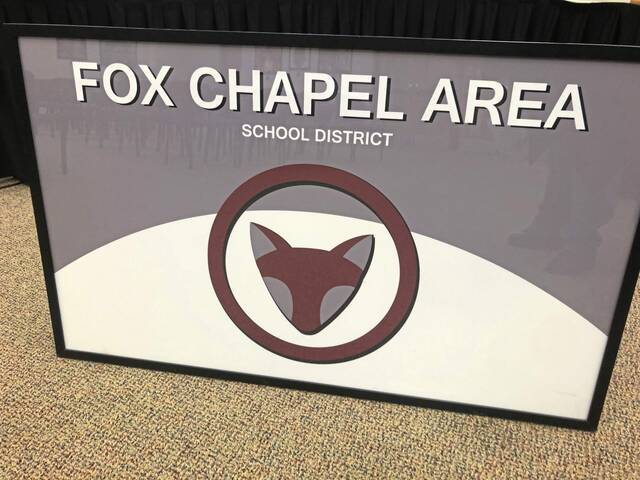The Fox Chapel Area School Board has given preliminary approval to a 2022-23 budget that contains a 1.5% tax increase.
The spending plan would increase the mileage rate by 0.3019 mils.
The median home value in the district is $217,800. The tax hike would mean owners of a home of that value would pay about $65 more per year in property taxes, according to the district’s mileage impact chart.
The overall tax hike is expected to generate approximately $1.07 million in additional revenue for the district.
Board members unanimously approved the preliminary spending plan on May 9.
Its official adoption of the budget is scheduled for June 13.
In January, the board pledged to keep any tax increases within a state limit based on inflation.
Law 1, passed in 2006 to provide property tax relief, sets a tax cap for school districts to cover normal inflationary costs and enact a balanced budget without exceeding the tax increase cap.
In the case of Fox Chapel, the index for the next school year is 3.4%, or 0.6843 thousandths. The current mileage rate is 20.1 mills.
A rise in the index would have represented about $147 more in taxes for median homeowners.
There are no program or staff cuts in the budget.
Projected revenues were approximately $109.3 million and expenditures were $111 million, with a projected deficit of $1.7 million to be covered by reserve funds.
The district raised taxes for the current school year budget by 1.3 percent.
The board plans to transfer $2 million from the general fund to the capital reserve fund to cover a Hartwood Elementary air conditioning and lighting upgrade project and turf replacement for baseball, softball fields and high school all-rounders.
Board member and treasurer Eric Hamilton said the $2 million transfer is the main reason for the budget shortfall, but brings the total fund for capital projects to about $14 million.
“While we look on paper to be a net negative operationally, we are balanced in this budget,” Hamilton said. “We already have many projects online on how to spend this (fund). At least we’re starting to reduce the backlog of things we really need to keep our lights on, buildings warm and functional.
“I would like to thank all the (people) and the administration who are involved in getting this planning started. In order to continue to do this funding, we are going to have to continue to watch our expenses very closely so that we can have a margin to continue setting aside more funds for these needs.
District officials also cited an overall 14% increase in health insurance premiums, an 8% increase in tuition at cyber and charter schools, and a 6% increase in pension contributions as reasons for the the increase in taxes.
Hamilton noted that property tax increases are lower than inflation figures.
“We are still looking for ways to reduce this (tax increase), but if we hadn’t made the tough decisions in the previous years, we would be in a much tougher situation than we are,” said Hamilton.
Projected revenues include approximately $71 million in property taxes, just under $9.4 million in Bill 511 occupancy taxes, $21.6 million from state sources and $1.75 million from federal sources.
Expenditures include approximately $66.74 million for instruction, including salaries, benefits and supplies, $4.32 million for student support services, including professional and technical services, 6 $.68 million for administration, just over $9 million for operation and maintenance of plant services, $4.9 million for student transportation, and $2.8 million for student activities.
District Business Manager Kimberly Pawlishak presented the budget at the May 2 meeting. She summarized the spending plan at the May 9 meeting before the board vote.
Pawlishak said the budget includes using $1 million in federal stimulus funds for summer learning programs, student and staff support services and replacing windows at Dorseyville Middle School.
She said the budget numbers would be updated next month with state numbers, such as the property tax exclusion, gambling revenue and grants.
“Each year we have our final proposed budget using the previous year’s projected totals,” Pawlishak said. “Between the adoption of the proposed budget and the final adoption, we introduce these new real allocations as we receive them. The state budget has not yet been adopted. It is also typical. School district budgets are passed before state budgets, so there are always variations in actual budget revenue depending on the passing of the state budget.
Submissions and the proposed budget are available for review through the district website, fcasd.edu, under the “Budget and Finances” tab.
Michael DiVittorio is a staff writer for Tribune-Review. You can contact Michael at 412-871-2367, [email protected] or via Twitter .

